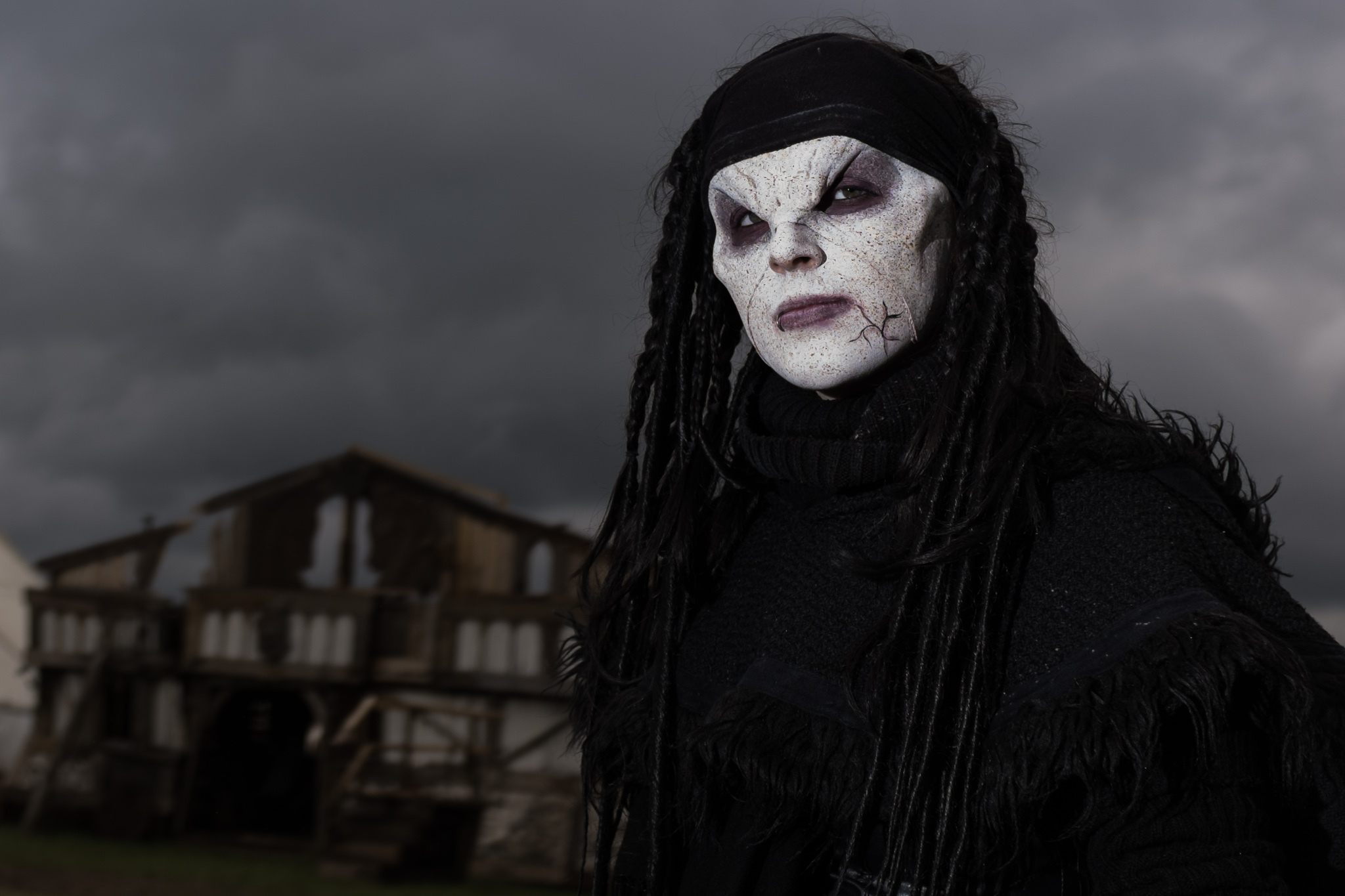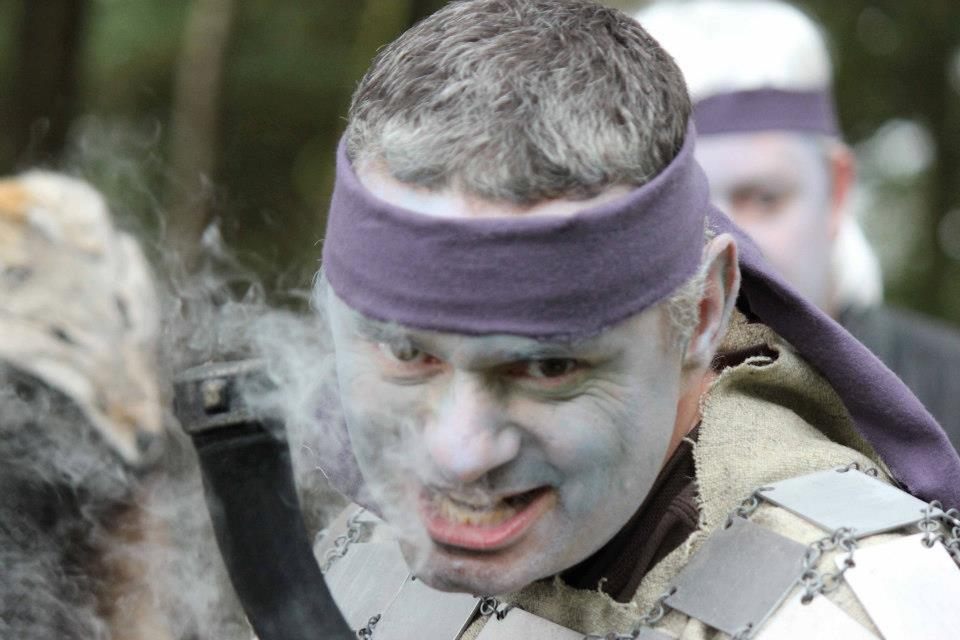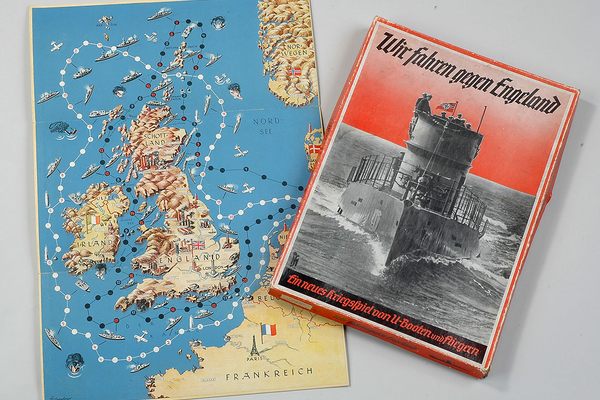The Joys of Pretend Villainy
What’s so great about playing the bad guy, according to LARPers.

While the average person likely spends most of their lives trying to avoid being a villain, there are those who make it a point to get out there and unleash their inner baddie.
For live-action role-players (LARPers) who choose to walk the path of darkness, playing the villain isn’t just fun, it’s a good way to learn more about themselves.
LARPing allows players to get together IRL and act out whatever fantasy scenario the organizers dream up. For the majority of LARPers, whether the setting is a high-fantasy kingdom, or a gritty supernatural underworld hidden among city streets, the characters they play tend to fight for the side of good as a matter of narrative expectation.
But those heroes need people to quest against, and that’s where players like Rob Davies and Stuart Edwards come in. Davies and Edwards, Welshmen both, have each been participating in LARPs for over 20 years, and are the co-founders of LARPBook, a website and podcast catering to LARPers. They also like to play the villains.
Being a bad guy, whether it is a cold-blooded hitman or a brutish orc chieftain, takes a special kind of person. “I find it very easy to put things in a box,” says Edwards. “If I want to become a complete and utter bastard, I become a complete and utter bastard.” (Edwards is “a lovely, cuddly, happy, soft guy, normally.”)

An imposing physicality doesn’t hurt. Davies, described by Edwards as “quite a broad chap” with a lot of upper-body strength and long hair that can be collected into an assassin’s ponytail, is often approached to play villains due to his look. But he doesn’t seem to mind. “If you’re playing a mean, nasty, villainous character, it helps if you can physically intimidate the other characters a little bit,” he says.
It’s also important to them that their villains have goals to inform their actions. “Whether or not they are willing to kill children, whether they are willing to eat everyone around them, whether or not they are after complete and utter global domination,” says Edwards.
It is, in part, this clarity of purpose that makes playing villains so attractive. As Davies says, when portraying a hero, you are almost always reactionary, acting within a somewhat rigid moral code, as a result of the villain’s plan. But when you get to be the villain, you’re the one in the know, acting for your own reasons. Most people have less power over their daily lives than their villain characters, and it can be empowering to give in to a little selfish, fictional evil for a weekend.
When you’re playing a villain, you also get to act out all those darker impulses that you know you can’t indulge in your real life. “Logic says that it can’t feel that good to be that bad. But we all like getting away with stuff,” says Edwards. “I feel really naughty when I get away with not paying for a five-pence carrier bag.”
Talking about one of the most memorable villains he ever had the chance to play, a menacing heavy in a modern-day psychological horror LARP, Davies recalls the sense of confidence and power he felt. “It was that willingness to not listen to people and to say what I wanted. To point guns at people a few times. To pull the trigger a few times. Obviously in character.” It might sound extreme, depending on your views about consenting adults engaging in fake violence, but the cathartic feeling of exercising power without the requisite responsibilities is entirely relatable.

Of course all of this villainous behavior, as fulfilling as it might be for the participants, does have its downside, sometimes to the other LARPers, who can take you for the villain you played in the game. “You have to be ready, willing, and capable of not making any friends that day,” says Edwards. “‘Remember me? I was the one who pushed you into the tank of sharks.’”
At the end of the game, for Davies and Edwards, the act of becoming a villain is about more than the simple pleasures of being evil. As with any other fulfilling pastime, they’ve also found that it’s able to enrich their daily lives. Through their villain play, they are ironically able to remind themselves why it’s better to be a nice person in their daily lives. “Everyone is playing a game, and everyone knows everyone is playing a game, but there’s also always an element of a real reaction,” says Davies. “You do rechannel those characters in a positive way.”
For Stewart’s part, he sees the benefits as a way of inoculating himself somewhat to life’s daily annoyances. “It’s a release. Because we go through or daily lives seeing that person who just stole that parking space, that guy who’s just cut in line at the cinema … knowing that what you want to do in that moment is something bad to that individual, but can’t do it. But in a LARP scenario, you get to, and in fact they encourage you to.”
CORRECTION 01/27/17: In a previous version of this article the quoted sources were incorrectly referred to as “Englishmen.”










Follow us on Twitter to get the latest on the world's hidden wonders.
Like us on Facebook to get the latest on the world's hidden wonders.
Follow us on Twitter Like us on Facebook